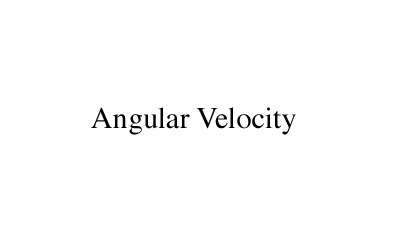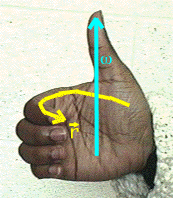

 Again,
in analogy to linear motion, in which the velocity
vector was defined as v = dx/dt (or Dx/Dt,)
we can define an angular velocity vector as the time derivative of
the angular displacement:
Again,
in analogy to linear motion, in which the velocity
vector was defined as v = dx/dt (or Dx/Dt,)
we can define an angular velocity vector as the time derivative of
the angular displacement:
(non-calculus: w = Dq/Dt
in the limit Dq -> 0)
To be precise, w and q are axial vectors. For the purposes here, the distinction is mainly in where these axial vectors are pointing. As the name implies, they point along the axis of rotation. The direction (+ or -) is then given by the Right-Hand Rule:
If the axis of rotation is along the thumb, and the object rotates in the direction the fingers are pointing, then the angular velocity vector points in the same direction as the thumb.
We obtain the average angular velocity for finite time intervals just as we introduced the average velocity earlier:
Special case:
If the angular velocity is constant and the initial angle
q0
= 0, then
© MultiMedia Physics, 1999